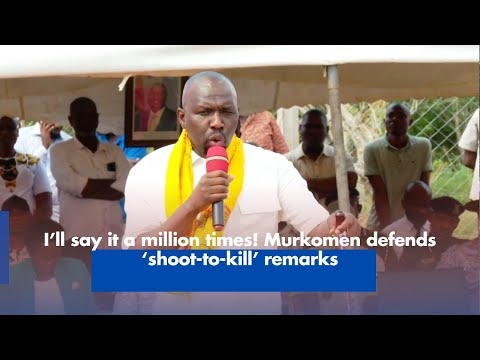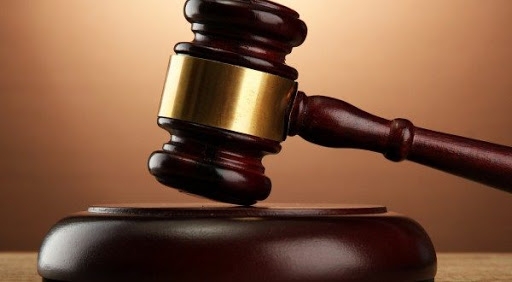In less than four weeks, Kenyans will know who will lead the next government for the next five years.
Campaigns for all elective seats have entered the homestretch, with the national focus shinning a spotlight on leading presidential candidates. Undoubtedly, the choice of who will be the president narrowed down to UDA and Kenya Kwanza Alliance leader DP William Ruto and ODM and Azimio la Umoja boss Raila Odinga.
The two leaders are not your ordinary politicians: Each one of them boasts of huge experiences in shaping the political landscape of Kenya. It should go on record that the two leading presidential candidates found themselves on one side of the political divide in 2007 before falling out ahead of the 2013 general election.
With the various pollsters pointing to a neck and neck contest, the big question is; what will be the deciding voting pattern in the race to get 50%+1 vote threshold?
The Central Kenya presents a challenge to Raila and Ruto as they scramble for the vote rich basket that commands about 5.2 million votes. Their running mates hail from the region. This is also the home of President Uhuru Kenyatta. But with the DP having fallen out with his boss, the President, how he navigates around this challenge and to get a sizable voting bloc in Mt Kenya is something that analysts will give attention to ahead of next month’s presidential election.
Pollsters have repeatedly placed Ruto ahead of Raila in central region. However, the DP must deal with the simmering differences with his allies led by the former Kiambu Governor William Kabogo and TSP’s Mwangi Kiunjuri, who have openly differed with the DP over their place in Kenya Kwanza Alliance.
Whether it is a question of expressing displeasure with the DP over his choice of Rigathi Gachagua in view of the succession politics in this region, should Ruto assume power, is something to be watched.
Ruto needs to get over 80 per cent of Mt Kenya region’s voting advantage to have a head start. But will he garner this without the support of President Kenyatta, who has openly endorsed Raila?
On the other hand, Raila has not previously enjoyed any meaningful support from this region. However, the choice of Karua and the backing by Uhuru is seen as the clearest strategy to take a reasonable slice of the Central bloc. Already, the regional fortunes in the next government appear to be shaping a contest between Karua and Gachagua as the region plans for Uhuru succession as he exits the political stage. This is a clear pointer to the level of political capital Central region commands.
Another area of focus is the Western Kenya voting bloc with over 2.5 million votes. Some people have previously joked that being the home of Mt Elgon would also mean it is another mountain region just like Central Kenya.
For a very long time, this region has been Raila’s bedrock as he has always enjoyed favourable, if not excellent support, since 2007. For Raila to start from an advantage position, he must garner over 70 per cent of the votes in the region, the same percentage that is being targeted by the Ruto-led team under the support of ANC leader Musalia Mudavadi and Ford Kenya leade, Moses Wetang’ula.
Both camps have dangled carrots for this region, if they form government.
The Mudavadi and Wetang’ula axis has bargained for a 30 per cent stake in Ruto’s government, while Raila settled on Kakamega Governor Oparanya as the Treasury CS.
In my considered view, except for Busia, the r counties of Kakamega and Vihiga are battlegrounds for the two camps.
Bungoma and by extension Trans Nzoia counties have been leaning towards Kenya Kwanza for the longest time now. There is no guarantee Raila will enjoy his traditional support from the vote-rich region after breaking ranks with Wetang’ula and Mudavadi, whose combined political experiences have worked against Raila’s influence in the region.
Candidates for various seats in the region are neck and neck, which equally points to the possible voting patterns for the two leading presidential candidates. For a man who has enjoyed full support from the region, it is now clear that Ruto has made good inroads to upset Raila’s vote basket.
Oparanya is under pressure to deliver the governor’s seat to ODM and any slight misstep will hand it to Senator Cleophas Malala, the ANC and Kenya Kwanza candidate. Vihiga is another battleground being the home of Mudavadi.
If Raila or Ruto don't garner prerequisite 50%+1, a re-run will be inevitable. Exorbitant amount of money will need to be at the disposal of the IEBC to conduct a re-run, which will slow down resumption to normalcy in business and government services. Prolonged election campaigns have always had a negative impact on the economy and national cohesion.
This presents a conundrum to the electoral agency, should a re-run be unavoidable.
Apparently, all know how a repeat of the 2017 presidential election divided the country right down in the middle and laid the ground for secession calls.
The best we ask from the IEBC is delivery of free, fair and credible elections.
Eric Nakhurenya is a public policy and legal consultant.










![[PHOTOS] Boniface Kariuki honoured with flag-draped coffin](/_next/image?url=https%3A%2F%2Fcdn.radioafrica.digital%2Fimage%2F2025%2F07%2Fc7df13cc-0b58-4ec7-b6a4-7e32e1d9ec63.jpg&w=3840&q=100)
